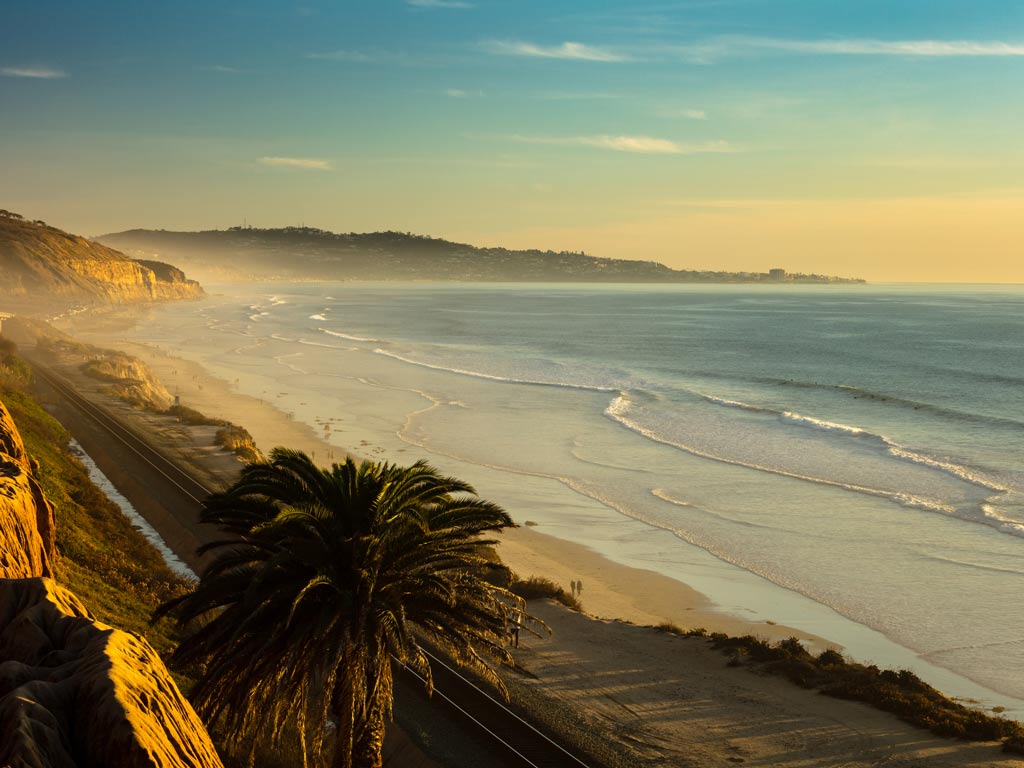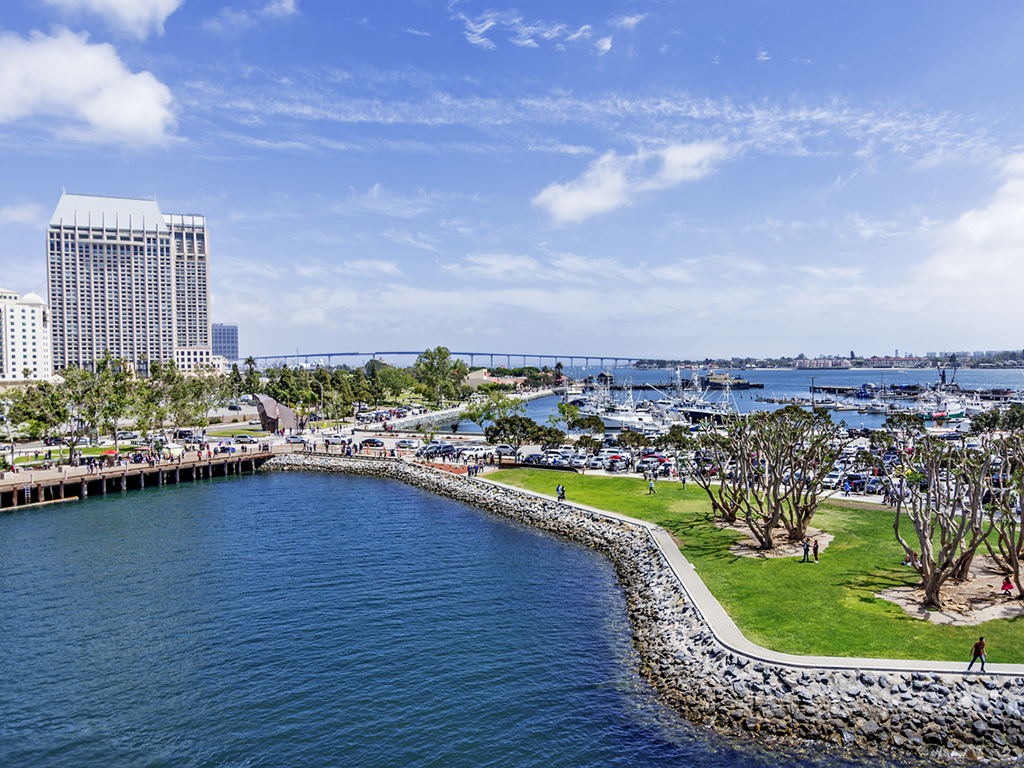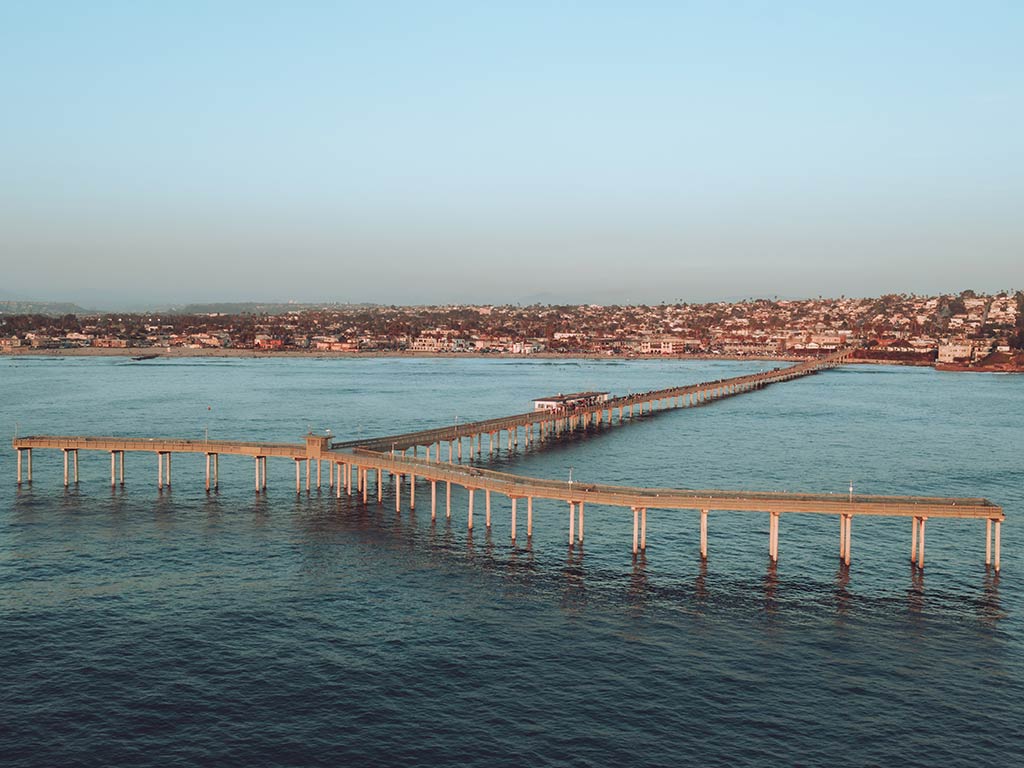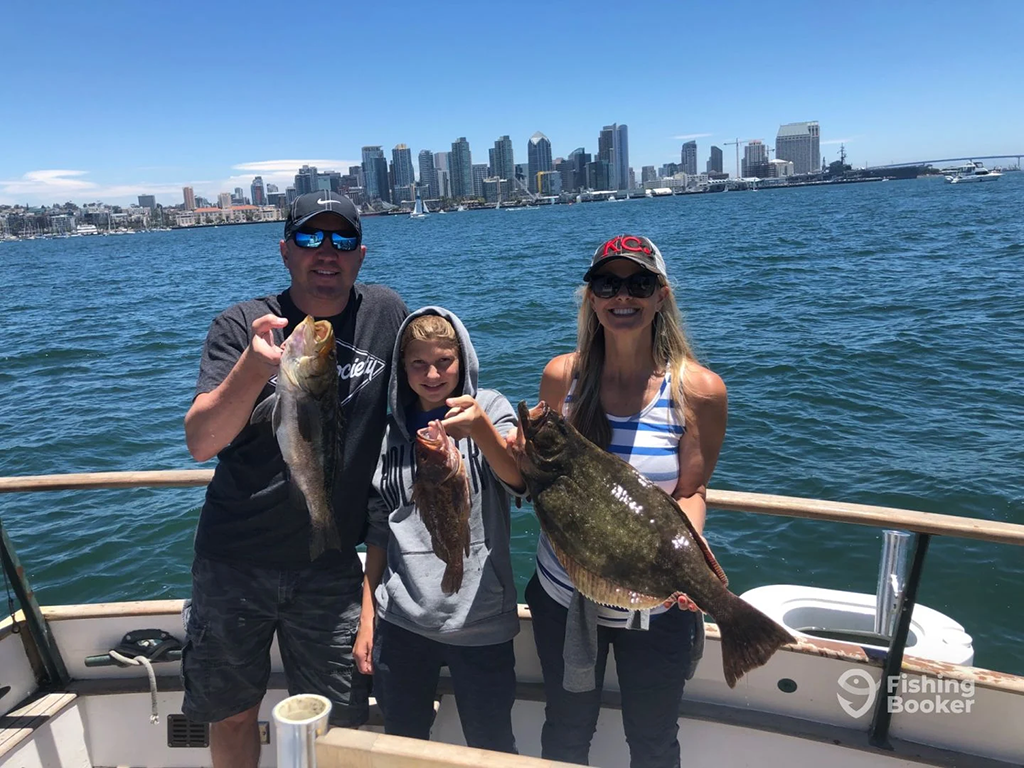“America’s Finest City” needs no introduction. Located in Southern California, it’s a city that naturally boasts sunny beaches and exciting attractions. But with access to the Pacific Ocean and some exciting inshore fisheries, it’s a diverse angling paradise, too. And reading the tides can affect your fishing success in San Diego…

From piers to marshy areas and flats to offshore reefs, San Diego is a city that offers year‑round fishing for species ranging from Halibut to Yellowtail, Tuna, and plenty more. Want to get your hands on some – or all – of these creatures? Let’s explore how San Diego’s tidal rhythms influence your catch.
Understanding San Diego’s Tides & Solunar Patterns
San Diego experiences a semidiurnal tide cycle. That means two high and two low tides each day, varying depending on the moon’s phase. Around full and new moons, spring tides bring stronger tidal swings, while around quarter moons, neap tides bring weaker ones.
Solunar periods can also play a key role. These are approximately two-hour periods, occurring twice a day, that affect moon and sun alignment. This actually affects the gravitational pull, further affecting the fish. When the alignment is directly overhead or below, it usually entices fish more, creating peak feeding times. Add in shifting pressures and time of day, and it can all affect how the fish act and bite.
Overall, the most productive time to fish San Diego tides is during an incoming or outgoing tide around dawn or dusk. Also, when solunar feeding periods align with a strong spring tide current around a full or new moon, this combo should create peak bite conditions.
Tidal Stages & What They Mean for San Diego Fishing
Incoming Tide (Rising)

As the tide floods in, bait fish and crustaceans enter shallow bays, flats, channels, and shorelines, bringing predators along. You’ll often land species like Corbina, Spotted Bay Bass, Calico Bass, and California Halibut at these times.
Pro tip! Target structure – drop‑offs, pilings, rocky bottoms – on an incoming tide for ambush predators such as Surf Perch, Croaker, and Halibut.
Outgoing Tide (Falling)

Outgoing tides flush bait and nutrients out of creeks and coves into deeper water – pretty much the opposite of what an incoming tide does. In San Diego Bay and near inlets, outgoing tides can trigger feeding frenzies.
Pro tip! Fish near channel mouths, bay entrances, and piers for inshore species. You can head to offshore wrecks and reefs and find larger species such as Bonito, Barracuda, and even Tuna and Sharks.
Slack Tide (The Quiet & Calm Switch)

Between incoming and outgoing tides, the currents slow and things get calm and quiet for a bit. Slack periods can bring slow activity as fish tend to take a break, but bottom dwellers like Halibut and Sanddab may stay active.
Pro tip! Downgrade your tackle, use scented baits, and bounce it bait around to entice predators during slack tides.
How can you track San Diego’s fishing tides?
There are plenty of apps and websites – and even old school boards at bait shops – out there that can help you track the San Diego tides. Check out some of these examples below:
TidesPro App
A mobile-friendly tide tracker that not only shows high and low tide times and heights for San Diego, but also overlays solunar feeding periods. TidesPro is the perfect app to help you find the best time for your outings and when peak fish activity can occur.
Tides4Fishing
Now this one I regularly use myself! Tides4Fishing provides comprehensive info on tides, solunar phases, weather, and surf data for many areas including San Diego. A cool feature it includes is the predicted bite quality paired with pressure variations, making it into a little chart for user-friendly fishing help.
NOAA Tide Chart
An official app powered by the NOAA, this offers reliable tide predictions, lunar calendars, sunrise and sunset information, and solunar data. All backed by real-time, official data for your fishing fun, the NOAA is rarely wrong.
Key Points to Good Fishing in San Diego

Here are some key things to keep in mind when it comes to reading the tides to go fishing in San Diego:
- Solunar peaks (major: ~5–7 am/pm; minor: ~11 am/noon and ~11 pm–12 am). These are usually top feeding times, but make sure to check the other various shifting factors too.
- Twilight hours. Dawn and dusk naturally boost heavy feeding times, especially with overlapping solunar peaks.
- Stronger tides. Incoming and outgoing tides bring more current, stirring up bait and boosting bite chances.
- Barometric pressure. Atmospheric pressure shifts, especially around tidal transitions, can create increased fish activity.
- Water temperatures. San Diego’s fish prefer moderate water temperatures (mid-60s to low 70s), so aim to fish when surface temperatures are steady in this range.
Top Best San Diego Fishing Spots (& Strategies)

Before you head out, I’ll leave you with a rundown of some of the top areas to fish in San Diego. I’ll quickly talk you through which tides work best for each, so that you know what you need to do:
Ocean Beach & Mission Beach Pier
- Best tides: A high incoming or outgoing tide can bring good results.
- Targets: Croakers, Surf Perch, Halibut – especially near surf edge, piers, and troughs.
San Diego Bay (Shelter Island, Ballast Point, Harbor Island)
- Best tides: On an incoming tide, stick around the bay and grassy areas. On outgoing, concentrate near channel mouths and island points.
- Targets: Spotted Bass, Corbina, and Bonefish near flats and structure.
La Jolla, Point Loma Reefs, & Offshore
- Best tides: When it comes to nearshore and offshore spots, the tide is not always a major factor, but it can be influential. If you want to fish away from land, then I’d recommend fishing during an outgoing tide or slack tide. That’s when most species will be heading out to find deeper waters and bait.
- Targets: Rockfish, Yellowtail, Seabass, Tuna, and Marlin near wrecks and reefs.
Your Southern California Adventure Awaits!

With tide awareness, solunar timing, and knowledge of the local waters, San Diego offers year‑round fishing fun for lots of cool species and scenarios. Whether you plan to fish from shore, on a jetty or pier, on a small bay boat, or if you’re heading offshore, the opportunities are endless! But don’t forget one of the most important factors: strong currents around populated areas bring the action.
Armed with the knowledge you’ve learned in this article, it’s time to get out there and make the most of San Diego’s fishing tides!
Have you fished in San Diego before? Which tide produced the best results? What did you catch? Share with us in the comments below!


